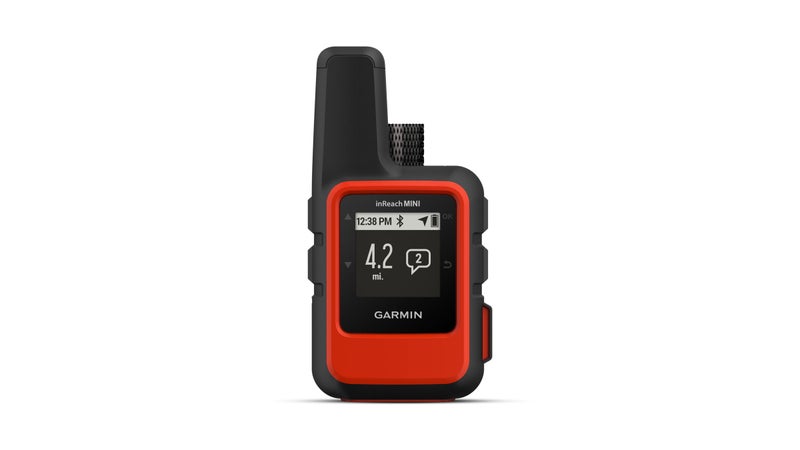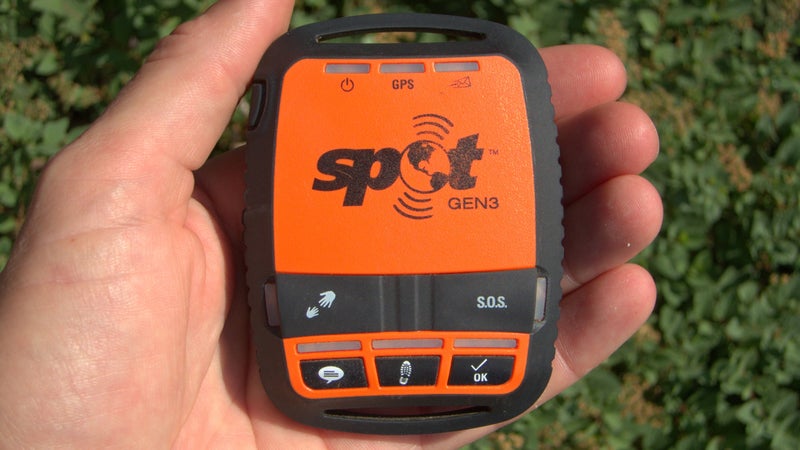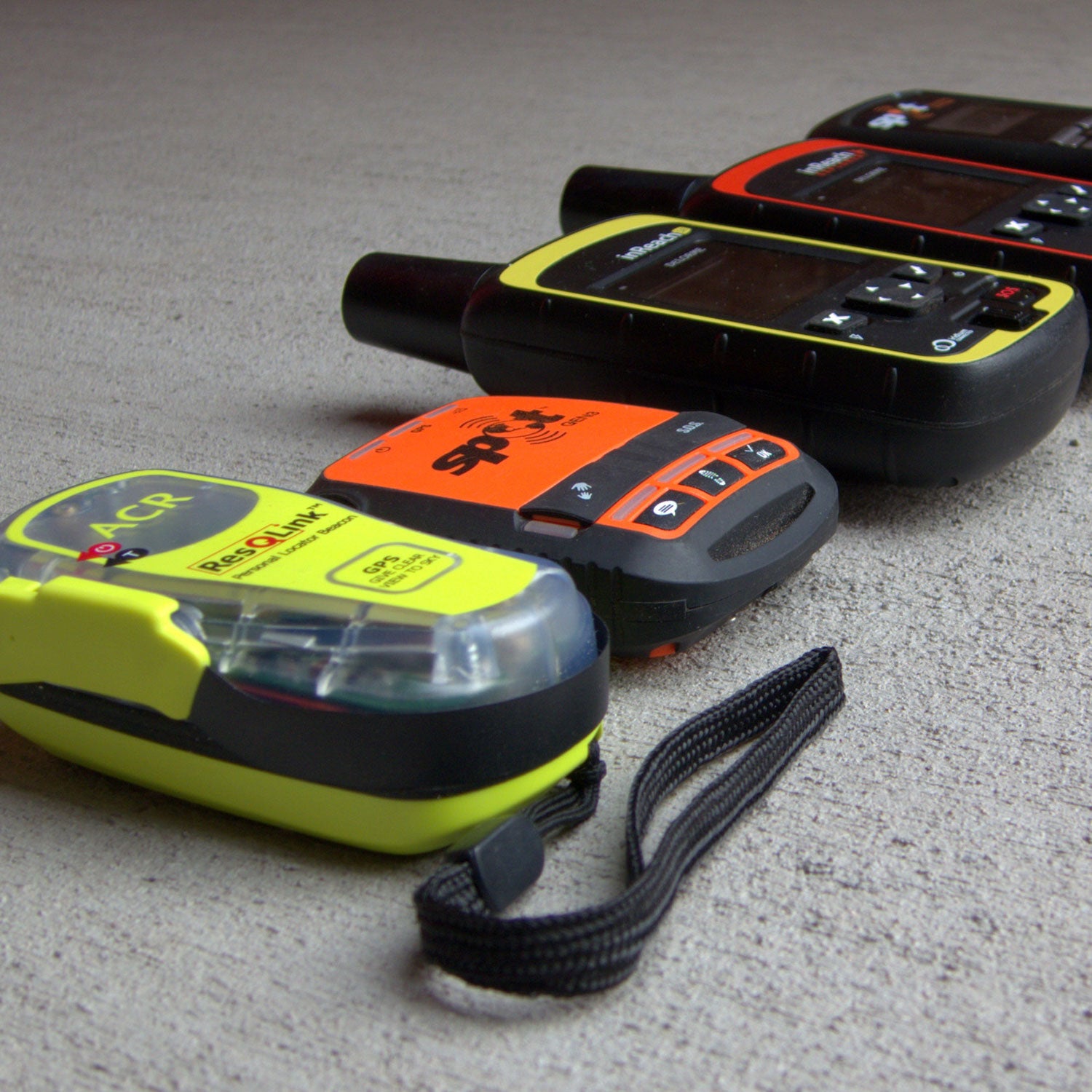Last week, Garmin announced its InReach Mini, a two-way satellite messenger that tips the scales at just 3.5 ounces and is about the same size as a dish sponge. It will be available in June or July and retails for $350.
At least on paper, I think it’s the most appealing messenger yet. The Mini is half the size and weight of the older Garmin InReach SE+ and Explorer+, and it offers much more functionality than similarly sized messengers like the Spot Gen3 and personal locator beacons like the ACR Eletronics ResQLink+.
Is the InReach Mini the right messenger for you? Well, let’s get geeky and delve into the differences between these devices.
What Does the Garmin InReach Mini Do?

Like other InReach devices, the Mini can trigger an SOS call to emergency responders; exchange texts with family, friends, and other InReach devices; and track and share its location. It has nonmessaging functionality, too, including crude GPS navigation and basic weather forecasts.
The Mini works anywhere in the world, using the Iridium satellite network. For those who play beyond the reliable range of cell service, it offers peace of mind and—in a true emergency—can be a godsend.
A service plan is required to operate the Mini, adding to its overall cost. Garmin offers four plans, ranging from $12 to $100 per month, depending on the features and contract length.
Pairing the Mini via Bluetooth to Garmin’s Earthmate smartphone app greatly enhances its usability and functionality. The Mini essentially acts like a satellite modem, and your phone (with its large, bright touchscreen) becomes the user interface. Navigate the menu system more efficiently, type custom messages more quickly, and access your entire contact list. Earthmate also offers full-fledged GPS navigation and can display multiple map and imagery layers.
(For more in-depth information about the Mini, view the or read of the device.)
InReach Mini vs. SE+ and Explorer+
The Mini is half the weight and size of the and , which were released in early 2017. This makes it more appealing for any user concerned with the portability of their gear. I’m thinking trail runners, cyclists, thru-hikers, and ultralight backpackers.
The retail price for the Mini is $50 to $100 less than the SE+ and Explorer+, which run $400 and $450, respectively (although they’re often available at a discount). The service plan cost is the same for all three units.
To shrink the Mini, Garmin had to make some sacrifices. The SE+ and Explorer+ both have bigger color screens, more efficient button layouts, better virtual keyboards, and longer-lasting batteries. These sacrifices are hardly deal-breakers. The SE+/Explorer+ screen is still small and low-res, its buttons are still clumsy if you’re accustomed to a big smartphone touchscreen, the keyboard is slow, and on longer trips, the Mini can be easily recharged with a portable battery like the .
The biggest difference between the Mini and older InReach devices is the GPS navigation when used as standalone units. The SE+/Explorer+ are comparable to modern handheld GPS units, particularly the Explorer+, which is preloaded with color topographic maps with 1:24,000 resolution. In contrast, the Mini, when not paired to a smartphone, has ’90s-era functionality: It can save waypoints and tracks and display the distance and direction to saved points, but it has no mapping.
If you use the InReach mostly for messaging, like I do, this may not matter. Plus, when the Mini is paired with the Earthmate app, it offers all the same GPS functionality (and then some) of a standalone Explorer+.
Besides its weight, size, and cost, the Mini has one more advantage over the existing devices: It is compatible with select Garmin devices, like the Fenix 5 GPS watch. Imagine being able to send and receive messages using your watch without breaking stride or pulling off to the side of the road—that would certainly be convenient, even if it’s not a necessity.
InReach Mini vs. SE and Explorer
The first-generation InReach SE and Explorer were manufactured by DeLorme, which Garmin purchased in 2016. The devices have been discontinued but can currently be purchased new for , respectively.
The SE and Explorer are marginally smaller and lighter than the SE+ and Explorer+, but they’re still roughly twice as large and heavy as the Mini.
The Mini sits between the SE and Explorer in terms of standalone navigation. The SE is purely a messenger, with no navigation. The Explorer has full GPS navigation functionality but needs an active subscription to function. All three units pair with Earthmate and can pull down a weather forecast. (And buyer beware: The SOS lockout switch has been known to malfunction.)
InReach Mini vs. Spot Gen3

Spot invented the satellite messaging category in the late-aughts. The palm-sized retails for $150 and weighs four ounces. Like the InReach devices, a is required.
The fundamental difference between the InReach Mini and Spot Gen3 is that the Mini is a two-way satellite messenger, whereas the Spot can only send—not receive—messages. Furthermore, the Spot’s messages are very limited: Okay, Help, SOS, and a preset note.
I appreciate the simplicity of Spot, but its one-way messaging is hugely limiting in an emergency or just a notable inconvenience, whether that happens in the field or back at home. For me, the additional functionality of the InReach is worth the higher up-front cost.
InReach Mini vs. Personal Locater Beacons
Personal locator beacons (PLBs) like the predate the original Spot and have only one function: broadcasting an SOS message. They do not send or receive nonemergency texts, retrieve weather forecasts, or pair with a smartphone to enable GPS navigation.
Yet the category hangs in there. These devices cost less because there is no ongoing service charge after buying the unit ($250 to $300, depending on the model). And some users value the stronger 406MHz signal, which should increase the likelihood that the message will be received. But it’s still “press and pray,” since PLBs do not confirm receipt. (I should mention that my experience with InReach has given me no reason to question its reliability, so this seems like only a theoretical and marginal advantage.)
The InReach Mini will probably do little to erode the appeal of PLBs. The Mini is more expensive to buy and use and sticks with the Iridium network.
The Verdict
I think the InReach Mini will be a successful new product for Garmin. It retains the core InReach functionality (two-way messaging, location tracking, weather updates) in a package that is more portable than older InReach devices and provides a wider functionality than the Spot Gen3 and PLBs.
For second-tier functionality (navigation, custom texts), Mini users essentially must use the Earthmate smartphone app. But many users of older InReach devices already rely on this system because the app is easier to use than the device’s onboard controls.
So, Garmin: Where can I get in line?


